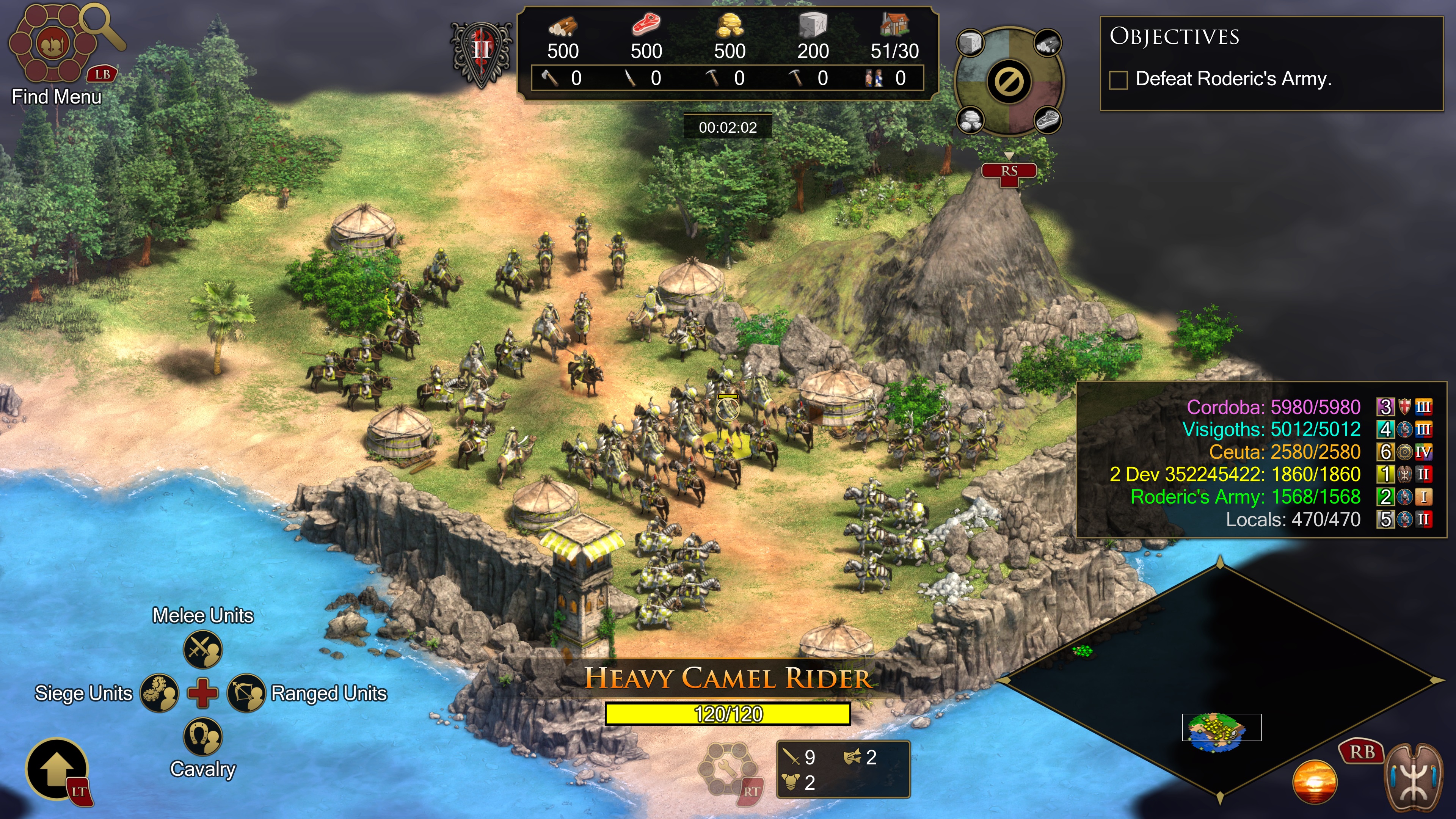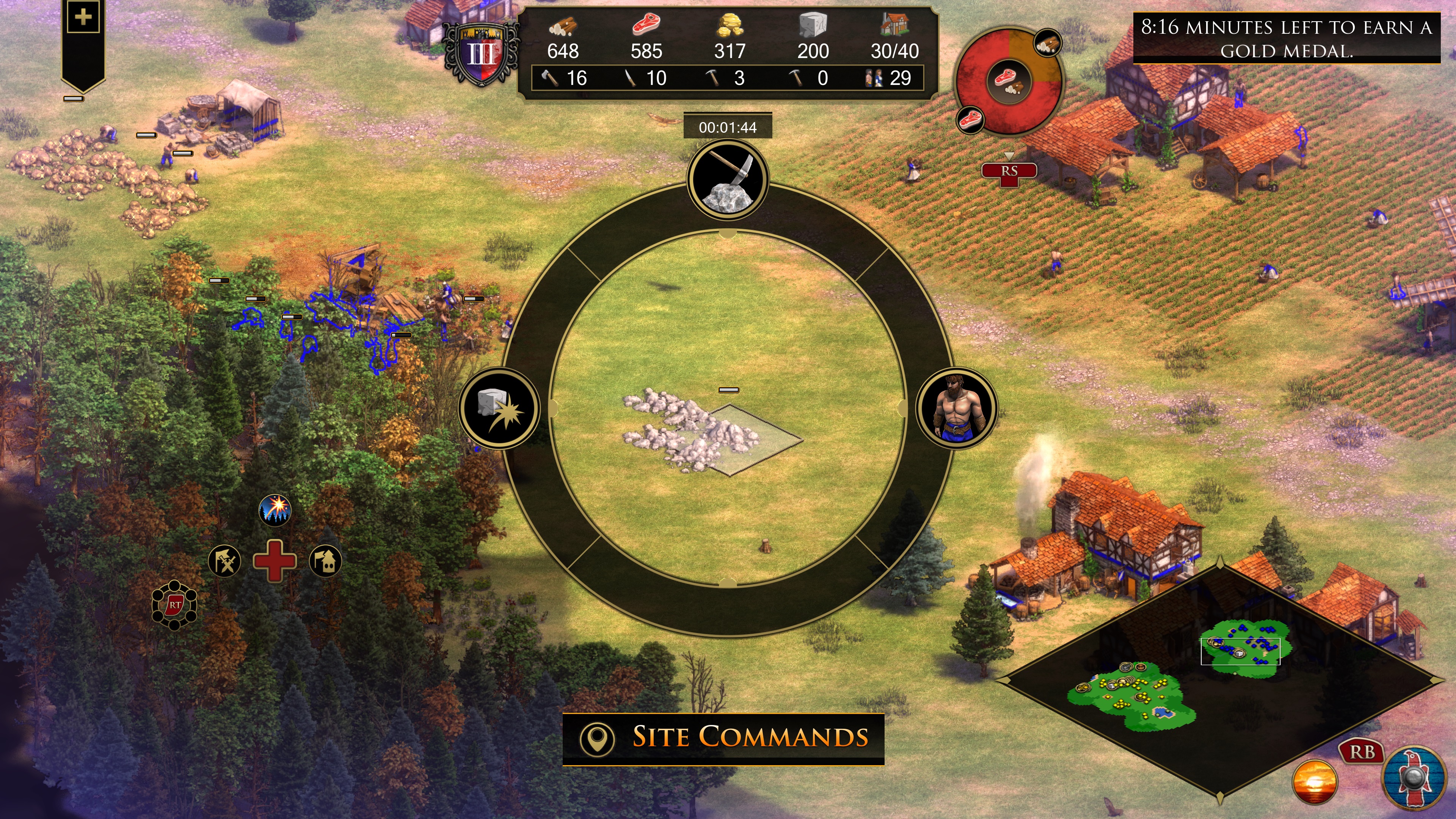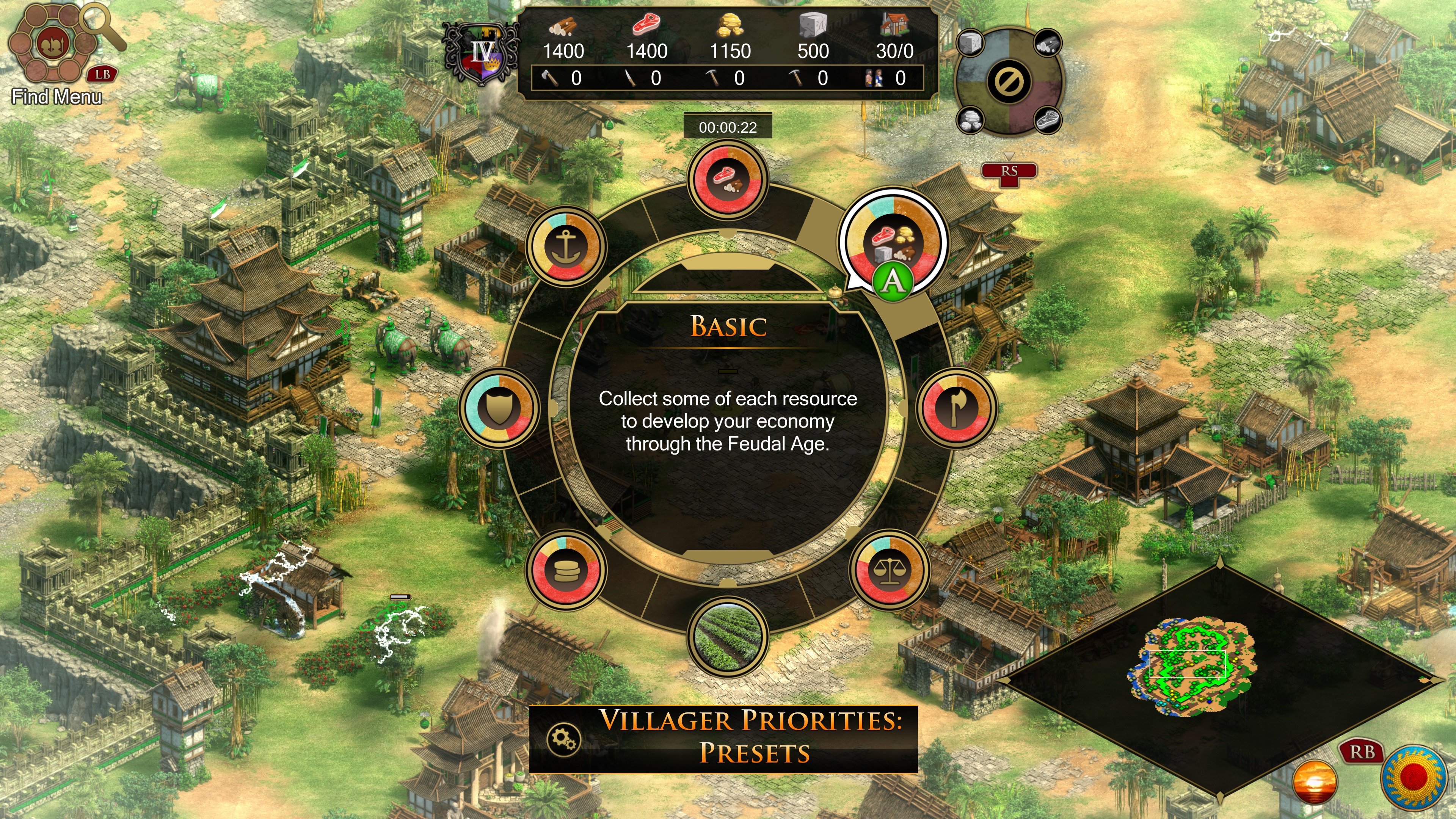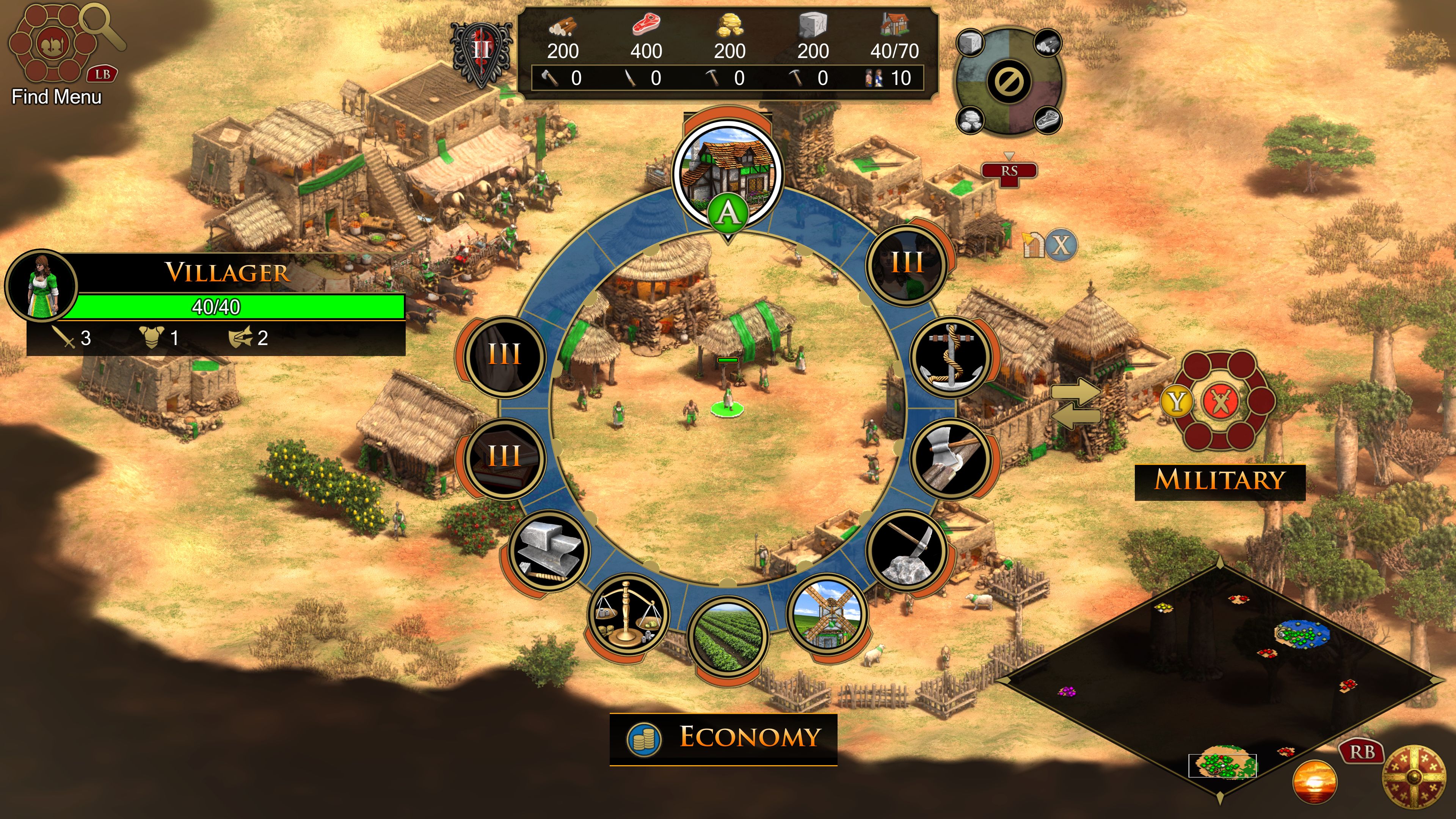Here's why Age of Empires II's controller support remains Xbox exclusive
The Age of Empires II: Definitive Edition devs need your help to refine console controls

“When will Age of Empires get a console port?” It’s a question that gamers have been asking ever since 2017, when Microsoft announced Age of Empires: Definitive Edition in the run-up to Age of Empires IV. The answer, as it turns out, was January 31, 2023. Age of Empires II: Definitive Edition is now available on Xbox consoles and Xbox Game Pass. As such, like any other Xbox game, it has to be compatible with a controller, and that’s always a tricky proposition for a real-time strategy title.
Over the past few days, I’ve gone hands-on with AoE2 on the Xbox Series X and found that the controller scheme does, indeed, work. That’s pretty remarkable, considering the ignominious history of console RTS games with abysmal controls. I’ve also found that the developers have made some smart adjustments to accommodate Xbox controllers — and that those adjustments might be pretty controversial, if they ever made their way back to the PC version of the game. I also spoke with Alex Liu, Design Director at AoE2 developer World’s Edge, to learn about the challenges and benefits of ditching the series’ signature mouse-and-keyboard controls.
Setting out to conquer the controller

First off, if you’ve never played the Age of Empires series before, Age of Empires II: Definitive Edition on Xbox might be a good introduction to the series. It’s an historical RTS where you take control of a medieval civilization, and guide them through the fall of Rome up through the beginning of the gunpowder era. You create villagers, who gather resources and construct buildings, then use those resources and buildings to field an army, research new technologies and ultimately defeat your opponents, either through force of arms or the influence of your economy and culture.
This is all easy to do with a keyboard and mouse ... Console ports of RTS games usually stumble when it comes to controller support, though.
This is all easy to do with a keyboard and mouse, as you can scroll around the whole battlefield, selecting as many units as you like and assigning them to complete complex action queues. Each building and unit has its own keyboard shortcut, and the point-and-click interface lets you access almost any part of the game, from a particular soldier, to an objectives menu, to a crucial building, in just a second or two.
Console ports of RTS games usually stumble when it comes to controller support, though. The basic “click and drag” selection action is almost impossible, for starters. With relatively few buttons, each input has to be contextual, and may be responsible for tons of disparate functions. Even just scrolling around the map may take too long, as the default camera controls have to be slow enough to find individual units, and accessing the minimap is a whole extra step.
“Unit selection has always been the most difficult area to adapt to controllers, as the analog sticks lack the speed and precision of a mouse,” said Liu. “Solving this required a combination of efforts across many areas. We tuned the crosshair movements, added magnetism, and created new button shortcuts for common selection commands. But these were still not enough. We also needed to create a new set of features, including AI automation, to fundamentally alleviate the need of repetitive unit selection in the first place.”
In practice, the results are respectable, albeit imperfect. AoE2 lets players select multiple units by holding down a button to increase the cursor size, or using a hotkey to select similar units (villagers, soldiers, livestock, etc.). You can construct buildings by selecting a patch of empty ground, or a nearby resource. The minimap even expands so that players can scroll across it quickly. But Liu is correct that these enhancements, by themselves, don’t really make the game playable. What does is the AI automation that Liu discussed — and that’s easily the most controversial part of the game’s controller support.
Get instant access to breaking news, the hottest reviews, great deals and helpful tips.
Cursors vs. controllers: the crux of the problem

One of the biggest challenges that players face is how to allocate their villagers. The type of resources you need most over the course of a game varies tremendously, from food and wood in the early stages, to gold and stone later on. Manually assigning villagers to gather resources, as well as pulling them aside to construct or repair buildings, is a vital part of learning the game’s flow and strategy.
"Our many console-exclusive features, such as new shortcuts and new AI automation, were specifically designed to lower the barrier-of-entry for play and to reduce the APM (actions per minute) required for expert play."
Alex Liu, Design Director on AoE2
However, that would be a tremendous pain to manage with a controller. As such, AoE2 on Xbox lets you simply select your desired breakdown of resources, and automatically allocates each new villager appropriately. Likewise, the game will automatically assign villagers to construct buildings, and send them back to gathering when they’re done.
“Our many console-exclusive features, such as new shortcuts and new AI automation, were specifically designed to lower the barrier-of-entry for play and to reduce the APM (actions per minute) required for expert play,” Liu told Tom’s Guide.
It’s difficult to overstate just how much this small tweak changes the overall flow of AoE2. With AI handling villager micromanagement, players can focus much more on the “macro” levels of the game — technological research, base layout, military strategies and so forth.
AoE2 players on Reddit seem split about the move. One argument states that automation lowers the barrier of entry for new players, and makes console play feasible in the first place. Another viewpoint holds that automation bypasses an important part of the game, and could make new players too reliant on the computer’s decisions. As far as I can tell, both sides are correct.
It's worth noting, however, that if the team didn’t overhaul the controls from scratch, its only alternative would have been to simply treat the controller like a mouse, letting a single cursor do most of the work. And we already know that doesn’t work, courtesy of the PS2 port of Age of Empires II: The Age of Kings.
“Age of Kings on PS2, while playable, relied heavily on use of the cursor, just like the PC version. One of our earliest prototypes was very similar to that game,” Liu said. “Ultimately, our team felt that cursor-driven gameplay fundamentally does not feel native on controllers.”
Another solution? Difficulty scaling

To address this issue, Liu’s team added a “Story” difficulty setting to the campaign mode, which should let players complete most of the missions at a more relaxed pace. But that doesn’t really account for high-level multiplayer, which is something that the team will need players’ help to refine.
“We are very interested in feedback from our players on how our console controls stack up to PC at the highest competitive level. We would like to gather feedback from our community first."
Alex Liu, Design Director on AoE2
“We are very interested in feedback from our players on how our console controls stack up to PC at the highest competitive level,” Liu said. “We would like to gather feedback from our community first. 'What would you like to see on PC? What would you like to be implemented differently? Please share your opinions with us!'”
For now, at least, AoE2 controller support will remain on Xbox, as Liu and his team “currently have no plan[s] to integrate controller support or console-specific features and changes into the PC version.” Perhaps this is for the best, as the AI automation radically changes the flow of the game, and it’s hard to imagine competitive parity between controller and keyboard-and-mouse players.
On the other hand, players seem to have enthusiastically adopted controller support on the Xbox side, as Liu noted only “a very small percentage of Xbox players using keyboard a mouse.”
For now, the best thing that players can do is to share their opinions on AoE2’s console controls — both positive and negative — with the developers. If the Xbox features do eventually make their way back to the game’s PC version, it could be a major turning point in the history of the franchise — and no one knows historical turning points better than Age of Empires.

Marshall Honorof was a senior editor for Tom's Guide, overseeing the site's coverage of gaming hardware and software. He comes from a science writing background, having studied paleomammalogy, biological anthropology, and the history of science and technology. After hours, you can find him practicing taekwondo or doing deep dives on classic sci-fi.
